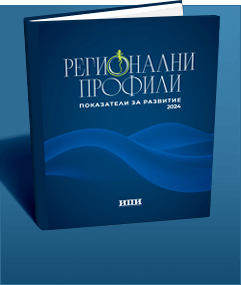IPI presented "Regional Profiles: Development Indicators - 2022"
Since 2012, the Institute for Market Economy presents the only study of its scale and depth on the social and economic condition of the regions in Bulgaria. The regional profiles are based on 68 indicators representing the real picture in the 28 regions. Over the past decade, numerous challenges have changed the country's economic and social map – slowing investment and growth, the pandemic and subsequent recession, rapid recovery, political instability, the war in Ukraine and the energy crisis in Europe. These periods have a different manifestation at the local level, they test the potential for local coping and response, they allow some regions to advance in their development, but in the end the differences between the areas remain, and the gap between the capital and the countryside, between the large and the small, between the developed and the poor did not shrink significantly. More generally, the economic imbalances between Northern and Southern Bulgaria are determined by the smaller scale of the economic centers in the North and weaker connectivity.

